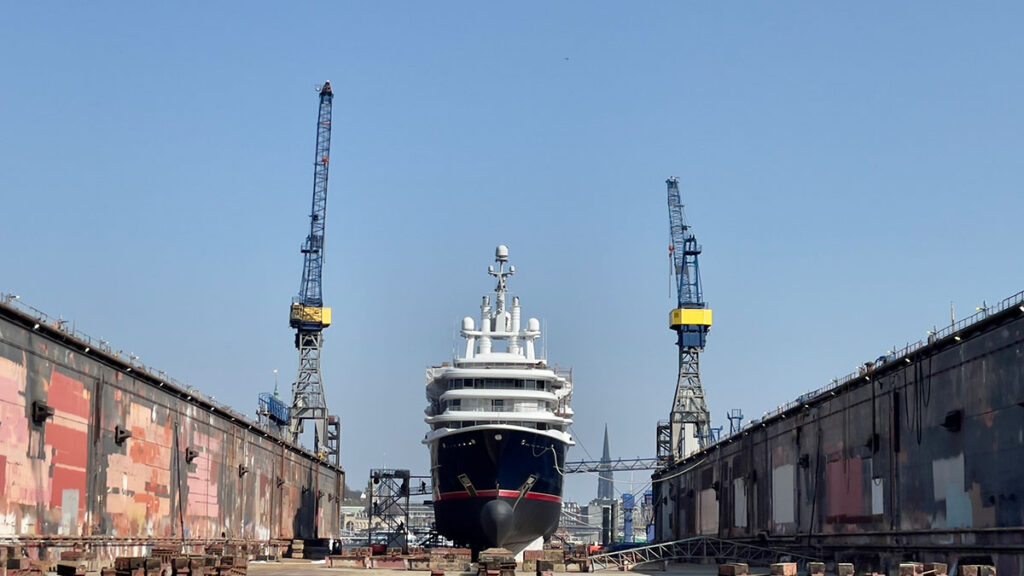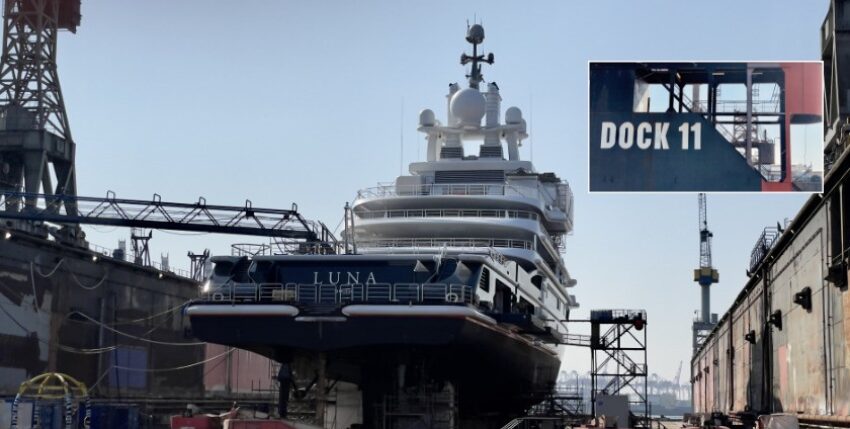Russian oligarchs used to order their yachts in Germany. The sanctions are therefore also a heavy blow for the shipyards in this country.
Some character traits are not part of what we generally think of as good behaviour: Voyeurism, schadenfreude, malice and envy fall into this category. But in view of Russia's war of aggression on Ukraine, we let the sometimes malicious reporting on the yachts of Russian oligarchs slide. Their sheer size, exorbitant prices and often unbridled luxury are fascinating. On the other hand, the owners' flaunted detachment from ordinary people, their arrogance and decadence are rather off-putting. Not so long ago, their maritime luxury vessels were admired in the sunlight of the Côte d'Azur or photographed on the banks of the Weser, mainly of interest to papparazzi and maritime enthusiasts. They were also - of course - an economic factor, especially in Germany. Today, the oligarchs' yachts have become the target of authorities and governments.
Reports about this in chat rooms, blogs and social media quickly became a hot topic around the world. When marineforum.online began to deal with the oligarchs' game of hide-and-seek in March, the number of users jumped into the five-digit range. For the online editorial team, this was a temptation to report more and more extensively on the topic. At the same time, however, it was also an obligation to remain serious and not to voyeuristically gloat over the fate of people. After all, the crew of these ships are normal, hard-working people.
Two dozen yachts have now been confiscated worldwide, around half of them in Europe with an estimated total value of 2.3 billion dollars. Luxury ships belonging to Russian owners are also currently moored in Hamburg harbour, causing horrendous costs for the Blohm+Voss shipyard. This is because yachts are expensive to maintain: the rule of thumb is that the annual operating costs amount to around 10 per cent of the ship's value.

In online comments, people around the world are expressing their delight at the current problems of Russian high society. One report on the oligarchs and their maritime toys was even entitled "Schadenfreude at sea" in the Washington Post. So there seems to be something satisfying about following the suffering of the beleaguered billionaires. Money and securities can be moved between offshore bank accounts and depots, but not a yacht with a helipad.
Only a few hours after the start of the invasion in February, yachts assigned to the oligarchs no longer revealed their position via the on-board Automated Information System, although this is required by the rules of the International Maritime Organisation. In a hurry, the ships, some of which cost millions, embarked on long escape routes, although hardly any of the owners were likely to have been on board. Their destinations were in the Caribbean, the Maldives or Turkish waters. The list is remarkable simply because of the resulting fuel bills - admittedly, we have also been involved in speculation about this.
At the same time as the ships disappeared from the waters of Western countries, numerous new accounts emerged on social media. Websites such as VesselFinder, MarineTraffic or SuperYacht Fan, where you can normally find the current position of the vessel you are looking for in a matter of seconds by simply entering the name of the ship, the registration number of the International Maritime Organisation or the Maritime Mobile Service Identity, are currently very popular. The 19-year-old American Jack Sweeney, who became famous for following Elon Musk online, who tracks the yachts of oligarchs by any means available, has also become a celebrity.
After all, the dedicated investigators did not fail to realise that the builders of many floating palaces are based in Germany. And the non-coastal dweller is amazed to realise that yacht building on the Weser, Elbe and Kiel Canal is among the finest and most sophisticated on offer anywhere in the world. Anyone who thinks highly of themselves buys German - and has them docked here too, even Vladimir Putin. Even "Manager Magazin" couldn't hold back any longer and wrote about Lürssen's yachts as the ultimate, accompanied by a personality report. Lürssen, Abeking & Rasmussen and Kröger are the crème de la crème of international yacht building, and Meyer Werft, otherwise known for its cruise ships, also wants to enter the market. There are around 1,000 yachts afloat worldwide under motor and sail, ranging from luxury to gigayacht in many fuzzy categories and worth anything from a paltry 20 to a crazy 800 million dollars. Whether 25 or 180 metres long, a good proportion of the world's luxury ships come from Germany. But after the Russian invasion and the sanctions against the country's moneyed aristocracy, the question arises as to what future demand there will be. The Ukraine crisis will cause demand to fall by up to 25 per cent, according to shipping circles. So will used yachts soon be sold off as bargains? Let's not be sardonic, because the German shipyard industry and its suppliers have also benefited from the now frowned upon billions from the Russian oligarchs.
Holger Schlüter










